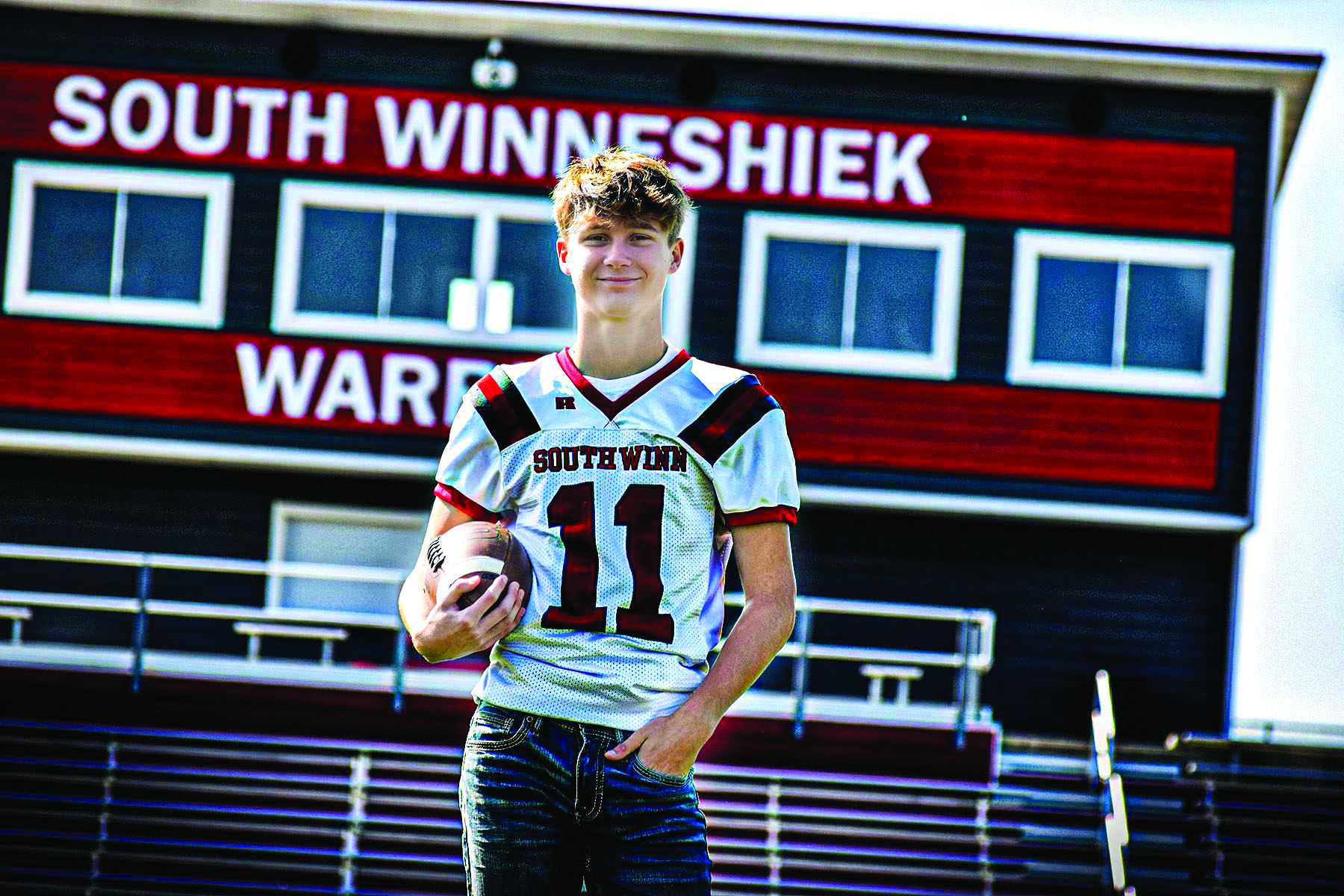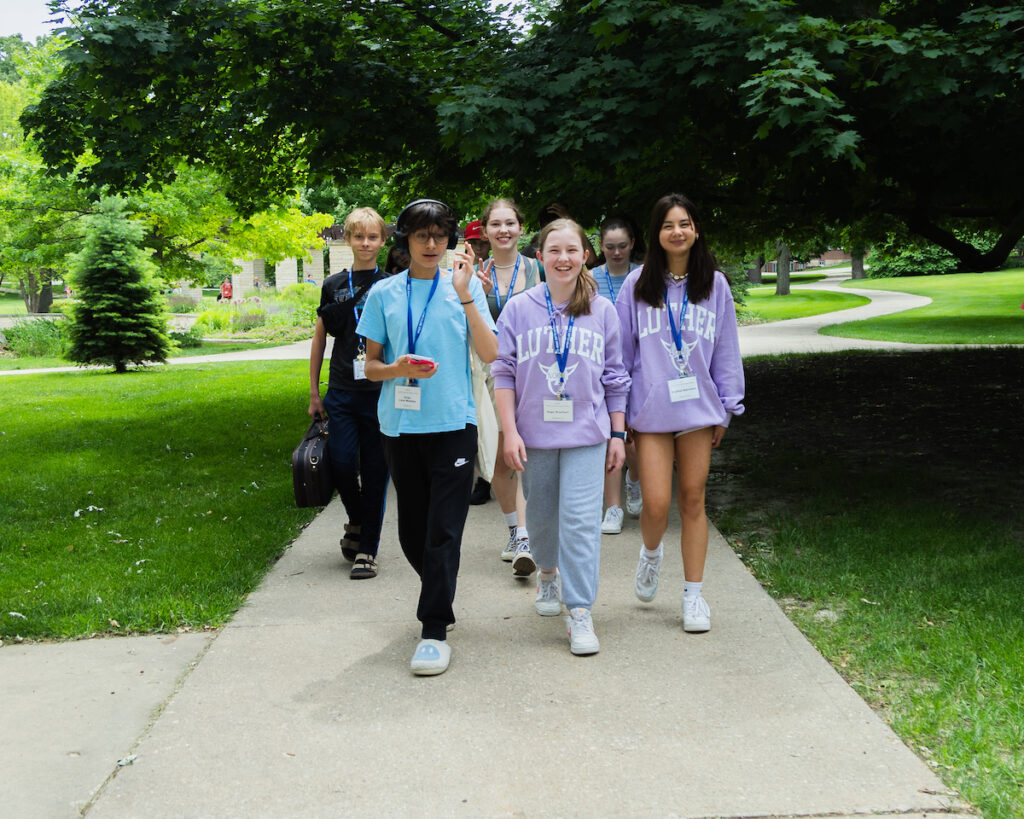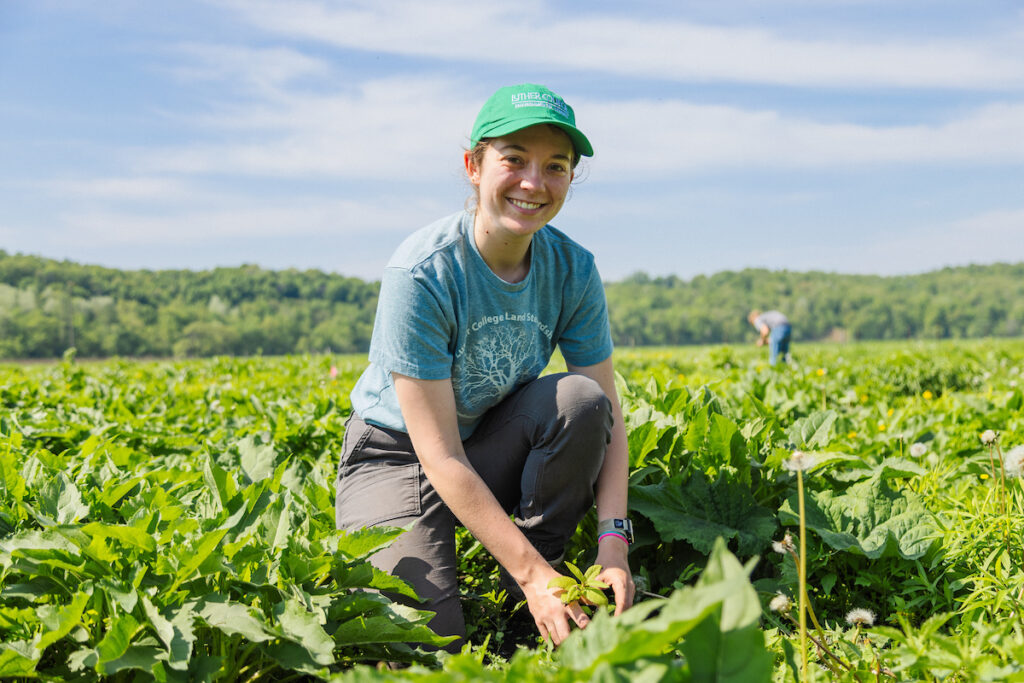
Josie Meyer planting native prairie species in Jewell Prairie.
DECORAH, IOWA—One hot sunny May morning, senior Josie Meyer and a few friends were out on Luther College’s Jewell Prairie with a truck full of seedlings and a water tank. It was the last stage of Meyer’s yearlong honors research project, part of her environmental studies major at Luther College.
“We’re planting New England aster, swamp milkweed, common milkweed, blazing star, and joe pye weed,” Meyer said. Her research, which looked into 12 years of prairie restoration efforts on this reclaimed farmland in Northeast Iowa, had led to this particular selection of plants.
Not only are restored prairies ecologically important for Iowa’s soil and water; they also spark a sense of pride.
“Being in Iowa, a state that’s so dominated by agriculture, it’s important to recognize that there are these beautiful, valuable ecosystems that are worth protecting and restoring,” Meyer said. “It’s the sense of place, having pride in the natural resources around you.”
Luther students have helped to uncover a rich crop of knowledge about Iowa’s original environment, the tallgrass prairie – its plants, its pollinator populations, and its effect on water and soil erosion.
Why Plant a Prairie?
Tallgrass prairie is one of the most endangered ecosystems in North America because of conversion into farmland; 99% of tallgrass prairie has been lost, according to the U.S. Fish and Wildlife Service.
Luther College has been working on restoring several former farm sites along the Upper Iowa River. The college purchased much of this land nearly a century ago from the Jewell family. The name Jewell Prairie acknowledges this family history. Robby Jewell, who graduated from Luther in 2014, still raises organic turkeys and uses sustainable agriculture practices on the family farm near Luther’s lands.
The college farmed on the land until 2011. In 2008, however, a major flood inundated the area, which made the crop fields eligible for the Emergency Watershed Protection (EWP) Program, a federal program that helps communities recover after natural disasters. Jewell Prairie was seeded in the fall of 2011 and had its first growing season in 2012.
Molly McNicoll, professor of biology and Luther’s Natural Areas Land Manager, has been overseeing the Jewell Prairie restoration.
“Planting prairies and woodlands allows us to meet several goals at once, including improving habitat,” McNicoll said, referring to the Dr. Donald H. Nelson Woodlands as well as Luther’s prairies. “Prairies are particularly great for soil erosion prevention, because they build soil and hold it.”
The prairies’ grasses, sedges and wildflowers have deep root systems, which mitigate flooding by absorbing river sediment into the soil, McNicoll explained. Prairies hold the soil instead of eroding when flooding happens, she added.
In addition, prairies support beneficial native insects and other wildlife. Luther students have made significant discoveries about pollinator species on the campus and its prairies. Luther 2024 graduates Gwen Coleman and Emmelyn Cullen worked with Professor of Biology Kirk Larsen in 2022 to research native bee biodiversity on campus. Their research identified 97 native bee species, including seven species of bees never before recorded in the state of Iowa. Their research also validated that Luther’s efforts to increase pollinator-friendly plants in landscaped areas and prairies were working.
“As soon as you start adding native species of plants, especially flowers, and increase the diversity of plants, they provide a ton of resources to pollinators and other native species for a healthy and functioning ecosystem,” Larsen said. “These species would not be found in Luther’s Jewell Prairie, Anderson Prairie or Gateway Prairie if they were corn or soybean fields.”
Studying Burn Regimes
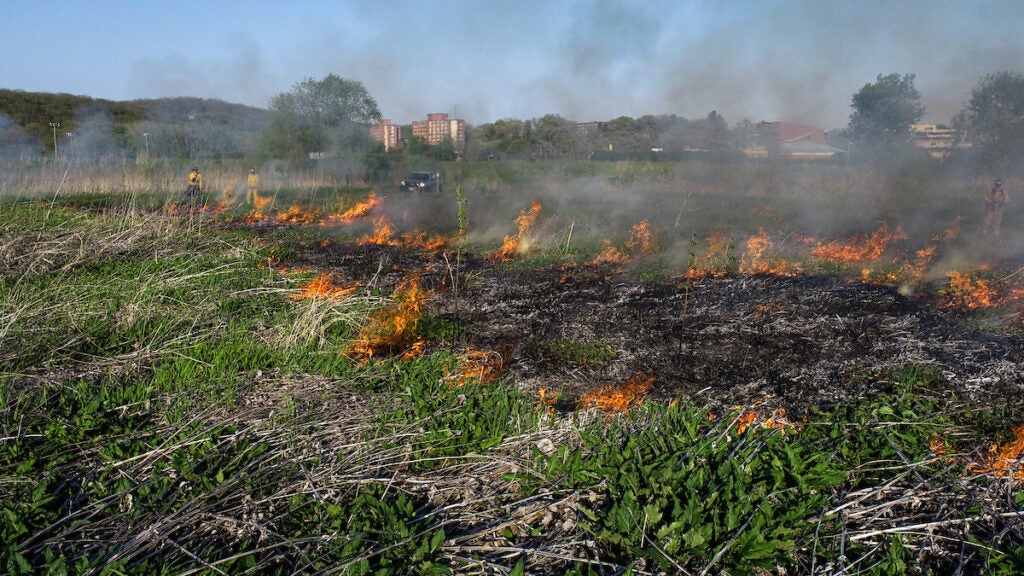
Luther College conducts a controlled burn of an Anderson Prairie section as part of a burn regime.
Meyer, on the other hand, studied the relationship between prairie burn regimes and plant species in the prairie. Researchers are still learning about the most effective burn regimes for prairie restorations.
“We burn in a rotation – only a third of the prairie at a time,” McNicoll said. “We can manipulate how we use fire to promote or suppress certain species.”
Burning reduces woody vegetation and creates bare spots for plants to germinate. Prairie plants have evolved around the nutrient cycles sparked by prescribed burns.
Burning in sections protects species living in the prairie.
“We don’t burn the entire prairie to preserve species that are overwintering in the prairie, like insects or birds,” McNicoll said. “For example, bobolinks use different parts of a burn cycle for different purposes like feeding and nesting.”
Newly planted prairies may respond differently to fire than older restorations. The Jewell Prairie planting was allowed to grow for four years before any burning began. A group of Luther students collected the initial data about Jewell Prairie’s plant communities in 2015, before any prescribed fire was used. Starting in 2016, one third of the prairie was burned in consecutive years.
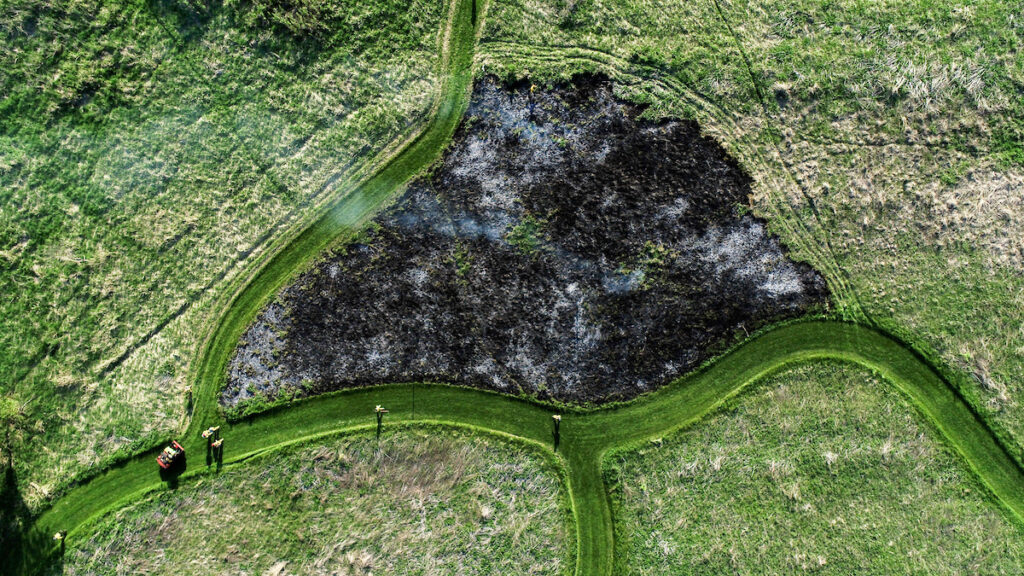

A section of Anderson Prairie after a controlled burn this past spring.
This burn regime allowed Meyer to study plant populations in each section separately. She looked at plant community change between 2015 and 2023 for each section of the prairie, and how these changes might be correlated with the amount of time between seeding and the first prescribed burn. She completed this work during a land stewardship internship and continued it during her honors thesis work.
“The diversity of species was surprising,” Meyer said. “I can now go out to a prairie and identify more than 20 species walking through a little stretch of prairie.”
In all sections of the prairie, she discovered increases in species diversity; increased establishment of the most valued, or “conservative,” species; and an increase of warm season grasses. She discovered no significant differences based on the year of initial burn.
“This finding adds to our understanding of prairie restoration, indicating that the initial seeding was well established at four years old,” said McNicoll. “Burning at four, five or six years old did not alter the early years of development.”
What Happens Next?
While Jewell Prairie has not yet reached “remnant-like diversity,” a model used for prairie restoration, the land is returning to its native ecosystem that can prevent soil erosion.
“You can’t just restore a prairie in one seeding event,” McNicoll said. “It’s a continual process. Part of that is the research the students have been doing.”
This project has been successful, as Meyer found that the conservative species — such as golden alexander and pale purple coneflower — have increased in population. These species are more likely to be found in higher quality sites, as a result of special conditions and the restoration’s seeding mixture.
Meyer’s research will guide the prairie’s development into the future, as she has set recommendations for the management of specific plant species. Some of them need to be monitored for overabundance, some controlled or reduced, and others need to be added, such as milkweed, blazing star, and legumes.
“Jewell is a ‘hidden gem.’ It’s away from the highway and near the river, and you’re more surrounded by natural spaces. The diversity of the habitat as a young prairie is really coming together,” McNicoll said. “It’s a perfect place to hike, walk, run or bike.”
“It’s really special that we have this prairie restoration that’s really high quality. Looking at it 12 years later, you can see that all the things that were done over the past 12 years were worth it,” Meyer said. “The fact that we have this amazing quality site, but also there’s still things to be done. It’s something that needs active management. Doing research like this is not one and done. It’s going to look different in a couple years.”
As for Meyer’s future, she is doing a summer research internship at Cedar Creek Long Term Ecological Research Site of the University of Minnesota. Similar to her work at Luther, she will be collecting data on long-term projects; she’s interested in restoration and conservation work broadly.
About Luther College
At Luther College in beautiful Decorah, Iowa, students explore big questions and take action to benefit people, communities and society. Our academic programs, experiential approach to learning and welcoming community inspire students to learn actively, live purposefully and lead courageously for a lifetime of impact. Learn more at luther.edu.















